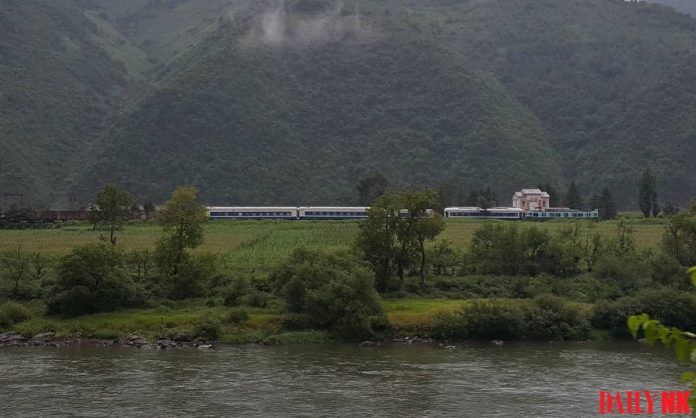North Korean authorities replaced road signs and other markers on national roads in Chagang Province in the runup to Party Foundation Day on Oct. 10, Daily NK has learned.
“In line with a provincial party committee order, road management teams changed all the road signs and city, county and village signs along all sections of the national roads in the province prior to Party Foundation Day,” a source in the province told Daily NK on Tuesday. The source, who spoke to Daily NK on condition of anonymity, added that the new signs are “more specific” than those in place before.
According to the source, the work was supervised by the provincial party committee, while the necessary materials and manpower were supplied by provincial authorities.
Provincial authorities carried out survey work to measure the length and width of the roads in addition to the sign replacements, the source further reported.
“At first, we thought they were just repainting the street signs because their colors had faded, but then people said it’s because the roads are a key part of the ‘Cholligil of Learning’ and ‘Cholligil of Liberation,’ meaning they are adjacent to revolutionary and historical sites,” the source said.
The “Cholligil of Learning” is a historic trail that traces the path Kim Il Sung is said to have walked from China to Pyongyang to attend school in 1923, while the “Cholligil of Liberation” traces Kim’s path as he fled from Pyongyang to China after the arrest of his father by imperial Japanese forces in 1925.
In fact, new signs for the “Cholligil of Learning” and “Cholligil of Liberation” were reportedly erected during the process of changing street signs.
Ultimately, the leadership’s decision to change the signage may be part of an effort to further intensify efforts to teach its people about the country’s “revolutionary traditions.”

Ever since North Korean leader Kim Jong Un declared the start of a “frontal breakthrough” campaign during an end-of-the-year plenary session last year, the country has been concentrating a great deal on “ideological education”-related projects to promote internal unity.
Stressing the so-called “revolutionary spirit of Paektu” and “spirit of the blizzards of Paektu,” the authorities are bolstering ideological education even as they focus on quarantine efforts against COVID-19 and post-typhoon recovery work.
As part of these broader efforts, the sign replacement work conducted by the authorities in Chagang Province appear to be aimed at strengthening ideological education in the province, where there are several revolutionary historic sites and stretches of the “Cholligil of Learning” and “Cholligil of Liberation.”
“Alongside the street signs replacement work, there was a project to repair and expand the Mt. Jangja Revolutionary Historic Site,” the source said. Located in Ganggye, where late leader Kim Jong Il reportedly took refuge during the Korean War, the site is used for field trips for locals so can learn about the country’s “revolutionary traditions.”
Refurbishing these revolutionary historical sites is likely an attempt to promote loyalty to Kim Jong Un and his leadership by highlighting the “revolutionary traditions” of Mt. Paektu.
Rodong Sinmun stressed in an article written before Party Foundation Day last month that the “revolutionary traditions” of Mt. Paektu is the “historical root and eternal cornerstone of our Party and revolution.” The article added that the key to “realizing revolutionary traditions” requires intensifying the purity of these traditions as the “revolution constantly moves forward.”
Please direct any comments or questions about this article to dailynkenglish@uni-media.net.

















